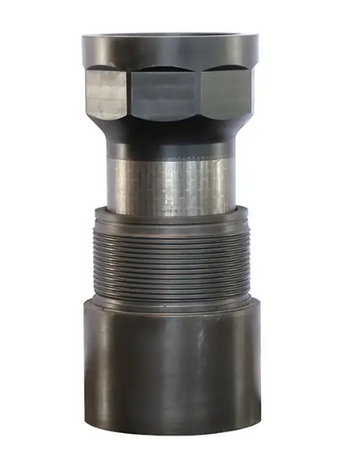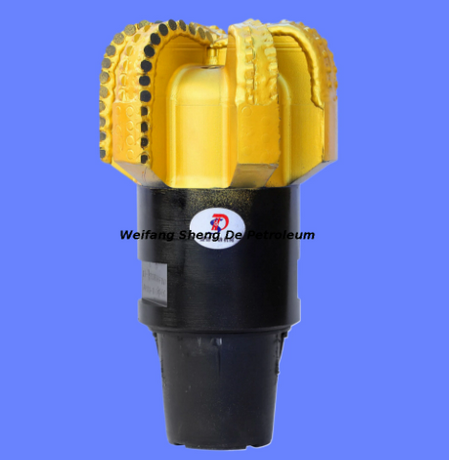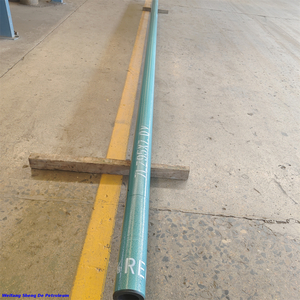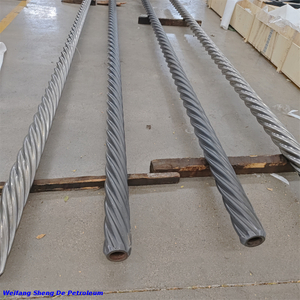In the oil and gas drilling industry, efficient drilling operations are essential for maximizing productivity while minimizing costs and risks. One critical component in modern drilling technologies is the downhole motor, particularly the PDM downhole motor (Positive Displacement Motor). But how does a downhole motor work, and what role does it play in improving drilling performance?In this article, we will delve into the mechanics of a PDM downhole motor, its operating principles, advantages, and the key factors that make it indispensable in today's drilling operations.
Understanding PDM Downhole Motors
What is a PDM Downhole Motor?
A PDM downhole motor is a type of motor used in drilling operations, specifically designed to convert hydraulic energy from the drilling fluid (mud) into mechanical energy to power the drill bit. Unlike traditional rotary motors, which rely on the rotation of the drill string, the PDM motor operates independently, providing torque and enabling more precise drilling capabilities. The motor works inside the wellbore, usually at great depths, making it an essential tool for directional and horizontal drilling.
The Components of a PDM Downhole Motor
A PDM downhole motor typically consists of three main components:
Rotor – The rotor is a helical-shaped component that rotates when drilling fluid is pumped through the motor.
Stator – The stator surrounds the rotor and is usually made of an elastomeric material that forms a seal, ensuring the efficient transfer of energy.
Bearings – Bearings support the rotor's movement and allow smooth rotation under pressure.
Together, these components create the mechanical power needed to rotate the drill bit efficiently.
How Does a PDM Downhole Motor Work?
The Role of Drilling Fluid in PDM Operation
The core function of a PDM downhole motor is to convert the pressure energy of the drilling fluid into mechanical power. The process starts with the hydraulic fluid (drilling mud) being pumped down the drill string at high pressure. As the fluid enters the motor, it passes through the rotor and stator.
The fluid's pressure causes the rotor to spin inside the stator. The rotor's helical design is key to this motion, as it allows the rotor to move in a smooth, continuous fashion, converting fluid pressure into rotational motion. The rotational energy produced is then transferred to the drill bit, enabling it to cut through rock formations.
The Moineau Principle and Its Impact
The Moineau principle, which is the fundamental concept behind a PDM downhole motor, is responsible for the motor's efficiency. This principle is based on the interaction between the rotor and stator, where the helical shape of the rotor causes the liquid to be displaced as it moves through the stator. This displacement creates a continuous and uniform flow of power, ensuring that the motor can deliver high torque even in challenging drilling conditions.
The Moineau principle allows the motor to generate consistent rotational power, even when there are fluctuations in the flow rate of the drilling fluid. This ensures stable drilling performance, which is crucial in complex and deep-well drilling operations.
Advantages of Using PDM Downhole Motors
Enhanced Directional Control
One of the primary benefits of PDM downhole motors is their ability to provide enhanced directional control during drilling operations. Because the motor is independent of the drill string's rotation, it allows for precise adjustments to the direction of the wellbore. This is particularly important for directional and horizontal drilling tasks, where the drill must navigate through challenging subsurface environments to reach specific targets.
The independent motor system also minimizes the risk of stuck pipe incidents, as it reduces the stress on the drill string, allowing for more flexible and controlled movement within the wellbore.
Higher Efficiency and Cost Savings
PDM downhole motors are designed to operate with higher efficiency compared to conventional drilling motors. By providing consistent and reliable power, they reduce the need for additional equipment and minimize the time spent on wellbore preparation. This increased efficiency translates into significant cost savings over the duration of a drilling project.
Additionally, the smooth operation of a PDM motor reduces wear and tear on the equipment, extending the lifespan of both the motor and other drilling components.
Improved Drilling Speed
Another advantage of using PDM downhole motors is the ability to drill faster. The motor's reliable torque output enables faster penetration rates into the rock formations, allowing for quicker completion of drilling tasks. This faster drilling speed is especially beneficial in high-pressure, high-temperature wells, where quick operation is critical to prevent issues such as wellbore instability.
Applications of PDM Downhole Motors
Directional and Horizontal Drilling
PDM downhole motors are widely used in directional drilling and horizontal drilling. In these types of drilling operations, the motor allows the drill bit to be steered with high accuracy, ensuring that the wellbore follows the desired path. The ability to steer the bit precisely is crucial when drilling through complex geological formations or when drilling to reach specific reservoirs.
High-Pressure, High-Temperature (HPHT) Wells
In HPHT wells, the conditions are extreme, with high pressure and temperature that can damage or reduce the efficiency of traditional drilling equipment. PDM downhole motors are specifically designed to withstand such harsh conditions, offering a reliable solution for drilling in deepwater or ultra-deepwater environments.
Underbalanced Drilling
Underbalanced drilling involves drilling with the pressure inside the well being lower than the pressure of the surrounding formations. This technique is used to increase the rate of penetration and reduce the risk of formation damage. PDM downhole motors are ideal for underbalanced drilling operations, as they provide stable power even in low-pressure conditions.
Choosing the Right PDM Downhole Motor for Your Drilling Needs
Motor Size and Power Requirements
When selecting a PDM downhole motor, it is crucial to choose the right size and power rating for the specific drilling application. Factors such as the type of formation, the depth of the well, and the required torque should be considered. A properly sized motor ensures efficient operation and minimizes the risk of equipment failure.
Durability and Performance in Harsh Environments
Consider the durability and performance of the motor in extreme conditions. PDM motors are available in different configurations to handle high temperatures, pressures, and aggressive drilling environments. Choosing a motor that is designed for the specific challenges of your project can significantly improve the performance and longevity of the equipment.
Conclusion
PDM downhole motors are essential tools in the modern drilling industry. They provide reliable, efficient power for drilling operations, particularly in directional, horizontal, and high-pressure environments. Their ability to operate independently of the drill string's rotation, combined with the Moineau principle, makes them ideal for precision drilling and faster penetration rates. By understanding how PDM downhole motors work, their advantages, and their applications, drilling professionals can make informed decisions that improve both efficiency and cost-effectiveness in drilling projects.



















